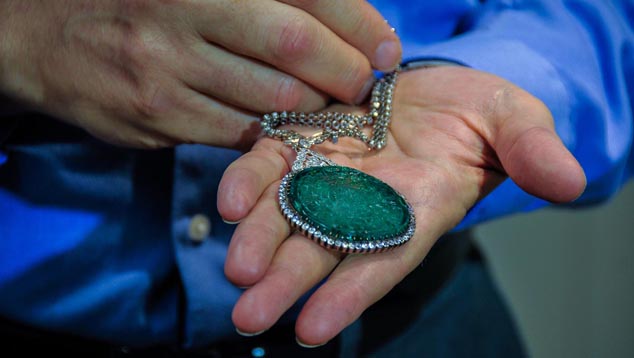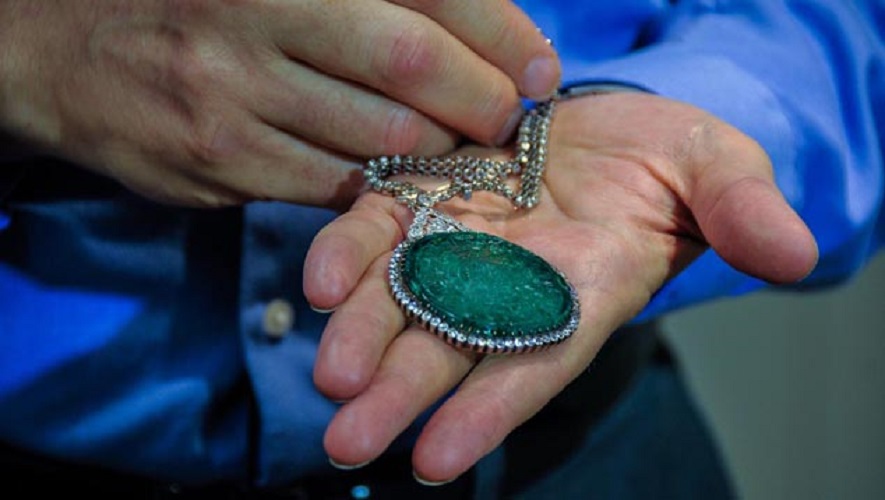This historic carved emerald is set into a platinum, gold, and diamond necklace. Possibly acquired in Colombia by Spanish conquistadors, the emerald was carved in the Mogul style, then set into the pendant and necklace in France around the turn of the 20th century. It was donated by Madeleine H. Murdock in 2007 to the The Smithsonian.

This carved flat emerald is set in a platinum, gold, and diamond pendant necklace. The emerald was discovered in Colombia, possibly by Spanish conquistadors, and found its way to India for cutting. This emerald was most likely carved, rather than faceted, because of the natural inclusions, the shape of the original beryl crystal, or it might also have been the preferred style at the time. The floral motif carving is believed to be of the Indian Mogul style. The Mogul Empire was the imperial power that ruled most of the Indian subcontinent from the early-16th to mid-19th centuries. Often times carved gemstones were worn on the arm as amulets; threads pulled through the small drill holes on the sides of this emerald could then be tied on to the arm of the wearer. The emerald is surrounded by round diamonds and is suspended from a double row diamond necklace; the diamonds total approximately 50 carats. A hallmark indicates that the Mogul emerald was set into the pendant and necklace in France around the turn of the 20th century. This historic and remarkable emerald necklace is a wonderful addition to the National Gem Collection.



